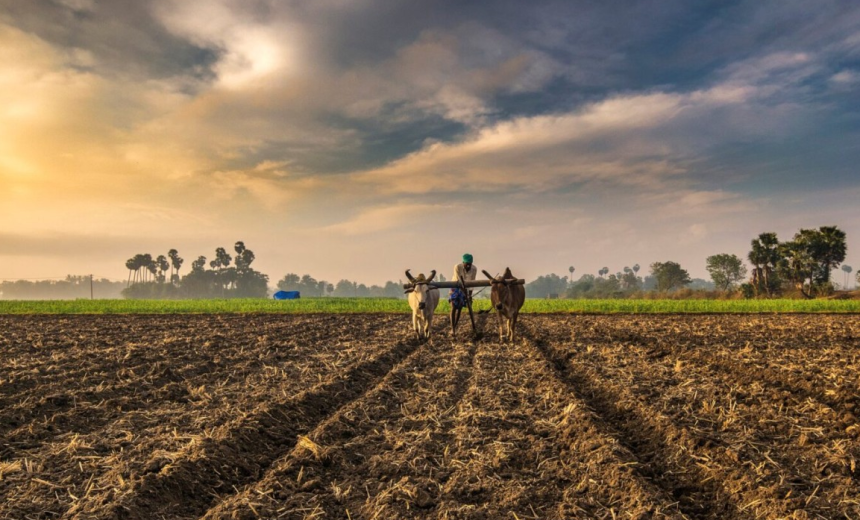India as a country is well known for its history and multiple cultures; it also has a long history attached to agriculture. With time, agriculture has always been the basis of Indian civilization, from the Indus valley civilization’s cultivated plains to the terraced fields of the South Peninsula. Agriculture has developed along with every kind of life that is arranged around the essential human ideals of work, and joint labour; it is integral to India’s wealthy and dynamic culture, and civilization. Agriculture assumes an essential part of the improvement and economy of health of the country.
The traditional knowledge that was passed down generations and cultures through the centuries have been the foundation of ancient Indian agricultural techniques. Books like the Vedas, Upanishads, and Puranas offer invaluable understanding related to seasonal calendars, agricultural practices, and respect for the natural world. The idea of “Ritualistic Agriculture,” in which agricultural deities were contented through ceremonies and rituals, affirm the spiritual aspect of farming.
Archaeological digs at Mohenjodaro, Rakhigarhi, Lothal, and Harappa have disclosed that the Indus Valley Civilization used tools like wheeled carts and ploughs to increase the production of various crops, including wheat, barley, rice, maize, and millets. Most people who were not directly involved in agriculture, concentrated on the growth of horticulture around the metropolitan hubs. It would be appropriate to refer to the Harappan culture (3500–1500 B.C.) as the “age of irrigated farming.”
The archaeological excavations also make it profusely evident that animal husbandry and agriculture coexisted. Cattle had been domesticated as early as the pre-Harappan levels of Kalibangan in western Rajasthan. Mung and mash were said to have originated in India. The Indian diet, cuisine, and religious rituals were greatly enhanced by mash during the Vedic and Post-Vedic periods. Rice, which is the crop that is produced worldwide nowadays and consumed as a staple diet, is believed that rice originated in India, Burma, or Indo-China. Thus, the discovery of agriculture, horticulture, vegetation, and animal husbandry was one of the Neolithic Revolution’s key accomplishments.
Furthermore, the Vedic scriptures advocate that the cultivators of the Vedic era had a reasonable understanding of the land’s fertility, seed selection and treatment, planting and harvesting seasons, crop rotation and other cultural practices, manuring to boost crop productivity, and similar topics. The Jaittiriva Samhita states that the same field would be used to sow pulses in the winter and rice in the summer.
Throughout the Buddhist era, people continued to take an interest in farming. The people also fully identified the importance of the usefulness of cattle. The improvement in gardening practices was also closely linked to Buddhist monasteries and temples. The enhancement of agriculture, forest products, pasture grounds, cows, horses, and elephants were also highly valued throughout the Mauryan era. The population was given access to veterinary care, and animal husbandry saw significant advancements.
The ancient Indian scholar Kautilya, also known as Chanakya, wrote the Arthashastra, which is a comprehensive dissertation on economic policy, government, and statecraft. Its pages included invaluable information about the agricultural methods used in ancient India. Kautilya established precise rules for the management of agriculture because he understood the critical role it played in maintaining the economy of the country.
Sharing the land equally among the growers was one of the core ideas that Arthashastra promoted. In agricultural administration, the ideas of “Kshetra” (land) and “Kraya” (selling) were decisive. Kautilya recommended harsh punishments for individuals who disregarded their responsibilities to maintain irrigation canals, emphasising the value of productive land and effective irrigation systems. Many crops, including sali (rice), varichi (rice), tila (sesamum), masha, masura, yoda (barley), godhuma (wheat), atasi (linseed), and sarshapa (mustard), are mentioned in Arthashastra. During the Mauryan and Kushan eras, horses were first fed with mash pulse.
In addition, Arthashastra prescribed the construction of granaries (Koshthagara) to preserve excess crops and provide food security in times of need. This proactive approach to agricultural management demonstrates the ancient Indian thinkers’ economic challenges-awareness.
Arboriculture and horticulture were vigorously encouraged by Ashoka (273–232 B.C.).During the Ashoka era, veterinary hospitals were state-run establishments that operated throughout the empire. India was controlled by the Sungas after the Mauryans. Brick-wells and better iron farming tools were discovered to be abundant at this time. There was a lot of rice and coconut palm cultivation.
In addition to the renaissance in science, literature, and the arts, agriculture also saw tremendous growth. However, land taxes were high during the Gupta era. As the land taxes rose, those pertaining to trade and commerce fell. The king collected taxes that ranged from one-fourth to one-sixth of the produce. In addition to all of this, the locals were required to feed the royal army whenever it went through the countryside.
Other sources of knowledge about the agricultural and horticultural practices of the people during the Gupta era are the Kamasutra by Vatsyayana, the Brhatsamhita by Varahamihira, and the Amarakosa by Amarsimha. Brhatsamhita by Varahamihira offered information on botany, zoology, and agriculture. It outlined the traits of animals as well as how plant illnesses were treated. Incidentally, the Brhatsamhita and the Puranas, especially the Agnipurana, dealt with land selection, manuring, cultivation, gathering and seed treatment, sowing, planting, reaping, and grafting. The Brhatsamhita list also mentioned several plant names along with their propagation techniques.
Information on soil, irrigation, and farming tools can also be found in the Amarakosha of Amarasimha, who was a scholar in Chandragupta II’s court. The Vaisyavarga discussed various soil types and whether they are suitable for growing certain crops, such maize and ksetram, rice.
Arabic and Persian publications discussed the construction of water works and parts of water technology in India. The spread of Persian and Indian irrigation methods resulted in the development of an irrigation system, which fuelled the development of material culture and the economy. Agricultural “zones” were classified as those that produced millets, wheat, or rice. In Gujarat, rice production remained dominant, whereas in north and central India, wheat production predominated.
Several irrigation canals were situated on the Sutlej River, and in 1857, the Rampur canal was built. Under the British Raj, only a few Indian economic crops—including rice, cotton, opium, and dye—made it to the international market. The amount of area under cultivation increased somewhat in the second part of the 1800s, and by the late 1800s, agricultural output was growing at an average annual pace of roughly 1%. Agrarian reforms were centred in Punjab, Andhra Pradesh, and the Narmada Valley because of their extensive use of canal networks for irrigation
Impact on Indian Economy
It is important to exaggerate the significance of agriculture on the ancient Indian economy. An in-depth knowledge of the terrain, climate, and available natural resources defined India’s ancient agricultural methods. Ancient Indian farmers used organic and sustainable farming practices to maintain the soil’s long-term fertility and the health of their crops. These methods included crop rotation, the use of organic manures, and irrigation techniques like digging wells and canals. These traditional farming methods produced excess produce in addition to assisting with population sustenance. The Indian economy was greatly impacted by this excess production. The foundation of trade and commerce was the excess agricultural produce. The extra harvests were exported to other nations and exchanged inside India, generating significant income.
Thus, the foundation of trade and commerce was surplus agricultural produce, which aided in the development of thriving marketplaces and trading routes. Cities like Ujjain, Taxila, and Pataliputra were inextricably linked to their hinterlands, which produced agricultural surpluses, and were hence prosperous.
Moreover, the excess agricultural production fuelled a thriving artisan industry encompassing metalworking, weaving, ceramics, and handicrafts. Specialised craft towns arose, where craftspeople refined their abilities and created objects for commerce and local use. This complex web of interdependencies across different sectors of the economy stimulated economic growth, creativity, and innovation.
An essential component of traditional Indian agriculture was the idea of sustainable resource use. Farmers used ecological wisdom, seasonal calendars, and traditional knowledge systems to maximise resource use and reduce environmental damage. In addition, the development of the plough, ox-drawn carts, and other farming tools transformed farming methods by allowing farmers to cultivate more regions and till the ground more effectively. These technological developments encouraged economic growth and innovation by laying the groundwork for artisanal crafts and rural businesses in addition to increasing agricultural production.
Furthermore, the expansion of other industries was aided by the excess agricultural produce. For instance, the abundance of excess grains and other agricultural products served as a source of raw materials for the textile industry, which in turn fuelled the growth of the textile trade. In addition, the abundance of agricultural output fuelled the expansion of cities and towns by necessitating the construction of warehouses, transportation hubs, and markets for the purchase and sale of agricultural products. All things considered, India’s traditional agricultural methods were vital to maintaining the country’s population, fostering trade and commerce, and promoting the development of other sectors of the economy. These actions not only aided in the economic growth of ancient India additionally set the stage for the country’s current agriculture industry.
The economic and social structure of contemporary India is still influenced by the agricultural practices of the ancient Indians. Traditional farming practices embody the concepts of sustainable resource management, economic self-sufficiency, technical innovation, and social equality. These ideas provide great insights for addressing modern concerns including food insecurity, climate change, and rural poverty. Even today, India’s agriculture industry is still very important to the nation’s economy today. It makes up roughly 16% of India’s GDP and 13% of all export earnings. Additionally, it gives over 620 million people in the nation security of living and jobs to 52% of the labour force. India’s traditional agricultural methods created a solid basis for the agricultural industry, which is now a major engine of the country’s economy.
Conclusion
To create a successful and resilient future for all, it is essential that we learn from the experience of our forefathers and capitalise on the transformative power of agriculture as India sets out on a path of sustainable development and inclusive prosperity. We can bring about an agricultural renaissance that embraces the prospects of the future while paying tribute to the legacy of the past by fusing traditional knowledge with contemporary science and technology.
(Author is a PhD. Scholar in Agri-Business Management in the Division of Agricultural Economics & Agri-Business Management at SKUAST-Jammu, Main Campus, Chatha, Jammu)








